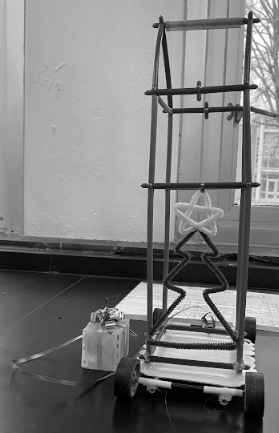Perfectly preserved dinosaur fossil found; Dinosaur hit by asteroid 66 million years ago
April 26, 2022
Scientists around the world are still researching the so-called Chicxulub asteroid which according to them happened 66 million years ago, way before civilization became what it is today.
According to Phillip Manning, professor of natural history at the University of Manchester, scientists believe that they have been given an “extraordinary view,” of the last day of the dinosaurs. A fossil of an animal, a preserved leg, has been found and accurately dated back to the time of the Big Bang, which, according to scientists, struck the Earth with extinction.
This fossil, a leg, even includes “remnants of the animal’s skin.” Manning shares his opinion, “it’s absolutely bonkers.” The thescelosaurus leg discovered at the Tanis dig site in North Dakota was the “ultimate dinosaur drumstick,” according to Manning. BBC documentary The Final Day with Sir Dad Attenborough showed when the dig took place. The professor said that when “Sir David looked at [the leg] he smiled and said ‘that is an impossible fossil.” Manning agreed.
The team was able to track this leg back to the Chicxulub through the debris that rained down immediately after the asteroid struck. It matches what is on the leg. Manning shares his excitement, “it’s absolutely gobsmackingly beautiful. I never dreamt in all of my career that I would get to look at something so time-constrained and beautiful,” explains Manning. Tiny “glass-like” particles of molten rock in the gills of fish fossils found at the site were “kicked up by the asteroid’s explosive impact,” as was shared on BBC News.
Robert DePalma, a graduate student from the University of Manchester led the dig. He explained to BBC News, “You look at the rock column, you look at fossils there, and it brings you back to that day.” Furthermore, Anthony Fiorillo, research professor at Southern Methodist University called the leg “beautifully preserved.” He explains that the fact this leg is intact with soft tissue is extremely unusual in fossils. Especially, as he says, because when a corpse deteriorates it is ground down to the bone.
Liz Freedman Fowler, assistant professor, shares with USA Today that she is waiting for more evidence, since finding preserved fossils in the same place is unusual. She and her team want to do “3D scans of the site.” Fowler wants to see “that leg in the ground and how it was lying relative to the fish fossils that were there.” She further explains that they would like to see the big picture of how the pieces fit together.






